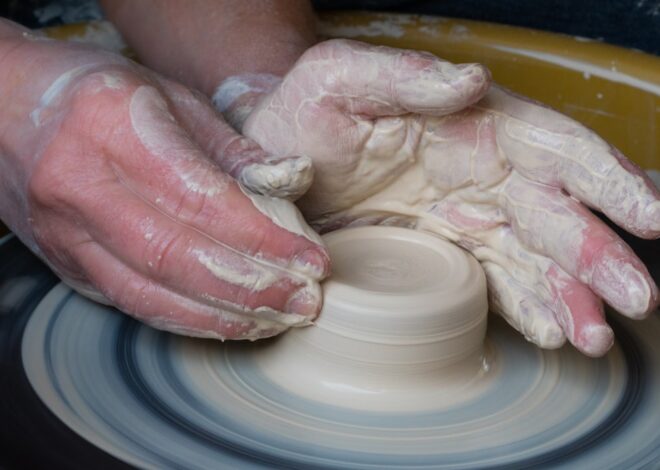
Understanding Stucco Keratosis: Causes and Treatment
Stucco keratosis is a common, benign skin condition that is characterized by the presence of small, raised, wart-like growths on the skin. These growths are typically white or flesh-colored and have a rough, scaly texture, resembling the appearance of stucco, hence the name “stucco keratosis.” The condition is most commonly found on the lower legs, but can also appear on the arms, back, and other areas of the body. Stucco keratosis is generally asymptomatic and does not cause any pain or discomfort, but it can be cosmetically bothersome for some individuals. While stucco keratosis is not harmful or contagious, it can be mistaken for other more serious skin conditions, so it is important to have it properly diagnosed by a dermatologist.
Stucco keratosis is a benign condition and does not pose any health risks. However, it can be a source of embarrassment or self-consciousness for some individuals due to its appearance. The growths are typically small, ranging from 1-5 millimeters in diameter, and can be numerous in number. While stucco keratosis is generally harmless, it is important to have any new or changing skin growths evaluated by a dermatologist to rule out more serious conditions. Treatment for stucco keratosis is usually not necessary unless the growths are causing discomfort or cosmetic concerns for the individual. Overall, stucco keratosis is a common and harmless skin condition that can be easily managed with proper diagnosis and care.
Key Takeaways
- Stucco keratosis is a common benign skin condition characterized by small, raised, wart-like growths on the skin.
- The exact cause of stucco keratosis is unknown, but it is believed to be related to sun exposure and aging.
- Risk factors for developing stucco keratosis include advanced age, fair skin, and frequent sun exposure.
- Symptoms of stucco keratosis include small, rough, flesh-colored or brown growths on the skin, and diagnosis is typically made through visual examination.
- Treatment options for stucco keratosis may include cryotherapy, laser therapy, or topical medications, but the condition is generally harmless and may not require treatment. It is important to see a doctor if the growths change in size, shape, or color.
Causes of Stucco Keratosis
The exact cause of stucco keratosis is not fully understood, but it is believed to be related to the overgrowth of keratin, a protein that is naturally found in the skin. Keratin is responsible for providing strength and protection to the skin, hair, and nails. In stucco keratosis, there is an abnormal accumulation of keratin in the outer layer of the skin, leading to the formation of the characteristic raised growths. It is thought that genetics may play a role in the development of stucco keratosis, as the condition tends to run in families. Additionally, sun exposure and aging may also contribute to the development of stucco keratosis, as the growths are more commonly found in older individuals and those with a history of chronic sun exposure.
While the exact cause of stucco keratosis remains unknown, there are certain factors that may contribute to its development. Genetics likely play a role in predisposing individuals to stucco keratosis, as the condition tends to run in families. Additionally, sun exposure and aging are believed to be contributing factors, as stucco keratosis is more commonly found in older individuals and those with a history of chronic sun exposure. It is important to note that stucco keratosis is not caused by any viral or bacterial infection and is not contagious. Overall, while the exact cause of stucco keratosis remains unclear, it is likely a combination of genetic predisposition and environmental factors such as sun exposure and aging.
Risk Factors for Developing Stucco Keratosis
There are several risk factors that may increase an individual’s likelihood of developing stucco keratosis. One of the primary risk factors is age, as stucco keratosis is more commonly found in older individuals. The condition tends to develop after the age of 40 and becomes more prevalent with advancing age. Additionally, chronic sun exposure is another significant risk factor for stucco keratosis. Prolonged exposure to ultraviolet (UV) radiation from the sun can lead to changes in the skin’s structure and function, potentially contributing to the development of stucco keratosis. Fair-skinned individuals are also at a higher risk for developing stucco keratosis, as they are more susceptible to sun damage and its effects on the skin.
Another risk factor for developing stucco keratosis is a family history of the condition. Individuals with a family history of stucco keratosis are more likely to develop the condition themselves, suggesting a genetic predisposition. Additionally, certain occupations or activities that involve prolonged sun exposure, such as outdoor work or recreational activities, may increase the risk of developing stucco keratosis. It is important for individuals with these risk factors to be mindful of their skin health and take steps to protect themselves from excessive sun exposure. This can include wearing protective clothing, using sunscreen, seeking shade during peak sun hours, and avoiding tanning beds. By being proactive about sun protection, individuals can help reduce their risk of developing stucco keratosis.
Symptoms and Diagnosis of Stucco Keratosis
| Symptoms | Diagnosis |
|---|---|
| Small, rough, flesh-colored or brown bumps | Physical examination by a dermatologist |
| Bumps may have a warty or stuck-on appearance | Biopsy to rule out other skin conditions |
| Usually found on the lower legs | Discussion of medical history and symptoms |
Stucco keratosis is characterized by the presence of small, raised growths on the skin that are typically white or flesh-colored. These growths have a rough, scaly texture and can range in size from 1-5 millimeters in diameter. They are most commonly found on the lower legs but can also appear on the arms, back, and other areas of the body. Stucco keratosis is generally asymptomatic and does not cause any pain or discomfort. However, some individuals may experience cosmetic concerns due to the appearance of the growths. It is important to note that stucco keratosis is benign and does not pose any health risks.
Diagnosing stucco keratosis typically involves a visual examination by a dermatologist. The characteristic appearance of the growths is usually sufficient for a diagnosis to be made. In some cases, a skin biopsy may be performed to confirm the diagnosis and rule out other potential skin conditions. A skin biopsy involves taking a small sample of tissue from one of the growths and examining it under a microscope. This can help to differentiate stucco keratosis from other similar-looking skin conditions such as seborrheic keratosis or verruca vulgaris. Overall, while stucco keratosis is generally easy to diagnose based on its appearance, it is important to have any new or changing skin growths evaluated by a dermatologist to ensure an accurate diagnosis.
Treatment Options for Stucco Keratosis
In most cases, treatment for stucco keratosis is not necessary, as the condition is benign and does not pose any health risks. However, some individuals may choose to have the growths removed for cosmetic reasons or if they are causing discomfort. There are several treatment options available for stucco keratosis, including cryotherapy, curettage, and laser therapy. Cryotherapy involves freezing the growths with liquid nitrogen, causing them to blister and eventually fall off. Curettage involves scraping the growths off the skin using a specialized instrument. Laser therapy uses focused light energy to destroy the growths.
It is important to note that while these treatments can effectively remove the existing growths, they do not prevent new ones from developing in the future. As such, individuals who undergo treatment for stucco keratosis may continue to develop new growths over time. Additionally, there is a risk of scarring with some treatment methods, so it is important to discuss the potential risks and benefits with a dermatologist before proceeding with treatment. Overall, while treatment for stucco keratosis is generally not necessary from a medical standpoint, it may be considered for cosmetic reasons or if the growths are causing discomfort for the individual.
Prevention of Stucco Keratosis

While it may not be possible to completely prevent stucco keratosis from developing, there are steps that individuals can take to reduce their risk of developing new growths and minimize existing ones. One of the most important preventive measures is sun protection. This includes wearing protective clothing such as hats and long sleeves, using sunscreen with a high SPF, seeking shade during peak sun hours, and avoiding tanning beds. By minimizing sun exposure and protecting the skin from UV radiation, individuals can help reduce their risk of developing stucco keratosis.
Another preventive measure for stucco keratosis is regular skin checks and self-examinations. By monitoring their skin for any new or changing growths, individuals can catch potential issues early and seek prompt medical attention if needed. This can help ensure that any new growths are properly evaluated and treated if necessary. Additionally, individuals with a family history of stucco keratosis may benefit from regular visits to a dermatologist for skin screenings and preventive care. By being proactive about their skin health and taking steps to protect themselves from excessive sun exposure, individuals can help reduce their risk of developing stucco keratosis.
When to See a Doctor for Stucco Keratosis
It is important to see a doctor if you notice any new or changing growths on your skin, including those that resemble stucco keratosis. While stucco keratosis itself is benign and does not pose any health risks, it is important to have any new or changing skin growths evaluated by a dermatologist to rule out more serious conditions. Additionally, if you have existing stucco keratosis growths that are causing discomfort or cosmetic concerns, you may choose to seek treatment from a dermatologist.
If you have a family history of stucco keratosis or other skin conditions, you may benefit from regular visits to a dermatologist for preventive care and skin screenings. This can help ensure that any new growths are properly evaluated and treated if necessary. Overall, while stucco keratosis itself is generally harmless, it is important to be proactive about your skin health and seek medical attention if you have any concerns about your skin or notice any new or changing growths.
In conclusion, stucco keratosis is a common and benign skin condition characterized by small, raised growths on the skin that are typically white or flesh-colored with a rough texture resembling stucco. While the exact cause of stucco keratosis remains unclear, it is believed to be related to genetics, sun exposure, and aging. Risk factors for developing stucco keratosis include age, chronic sun exposure, fair skin, and family history of the condition. Diagnosing stucco keratosis typically involves a visual examination by a dermatologist and may include a skin biopsy in some cases. Treatment options for stucco keratosis include cryotherapy, curettage, and laser therapy but are generally not necessary unless the growths are causing discomfort or cosmetic concerns. Preventive measures for stucco keratosis include sun protection and regular skin checks to monitor for new or changing growths. It is important to see a doctor if you have any concerns about your skin or notice any new or changing growths resembling stucco keratosis.
In conclusion, stucco keratosis is a common and benign skin condition characterized by small, raised growths on the skin that are typically white or flesh-colored with a rough texture resembling stucco. While the exact cause of stucco keratosis remains unclear, it is believed to be related to genetics, sun exposure, and aging. Risk factors for developing stucco keratosis include age, chronic sun exposure, fair skin, and family history of the condition. Diagnosing stucco keratosis typically involves a visual examination by a dermatologist and may include a skin biopsy in some cases. Treatment options for stucco keratosis include cryotherapy, curettage, and laser therapy but are generally not necessary unless the growths are causing discomfort or cosmetic concerns. Preventive measures for stucco keratosis include sun protection and regular skin checks to monitor for new or changing growths. It is important to see a doctor if you have any concerns about your skin or notice any new or changing growths resembling stucco keratosis.
If you’re interested in learning more about skin conditions, you may want to check out this article on povtry.com that discusses the causes and treatments for stucco keratosis. This common skin condition is characterized by small, raised bumps on the skin that can be itchy or uncomfortable. Understanding the underlying causes and available treatment options can help individuals manage their symptoms and improve their overall skin health.
FAQs
What is stucco keratosis?
Stucco keratosis is a common benign skin condition characterized by small, raised, wart-like growths on the skin. These growths are typically light brown or flesh-colored and have a rough, scaly texture.
Who is at risk for developing stucco keratosis?
Stucco keratosis is most commonly seen in middle-aged and older adults. It is more prevalent in individuals with fair skin and is often found on sun-exposed areas of the body, such as the legs and arms.
Is stucco keratosis contagious?
Stucco keratosis is not contagious. It is a non-infectious skin condition and cannot be spread from person to person through contact.
What causes stucco keratosis?
The exact cause of stucco keratosis is not fully understood, but it is believed to be related to sun exposure and aging. Genetics may also play a role in the development of this condition.
How is stucco keratosis diagnosed and treated?
Stucco keratosis is typically diagnosed based on its characteristic appearance. A dermatologist may perform a skin biopsy to confirm the diagnosis. Treatment options for stucco keratosis may include cryotherapy (freezing the growths with liquid nitrogen), laser therapy, or surgical removal. However, many individuals choose to leave stucco keratosis untreated, as it is harmless and does not pose any health risks.


